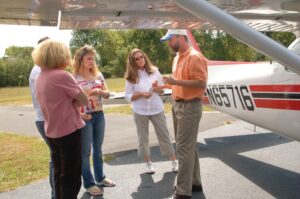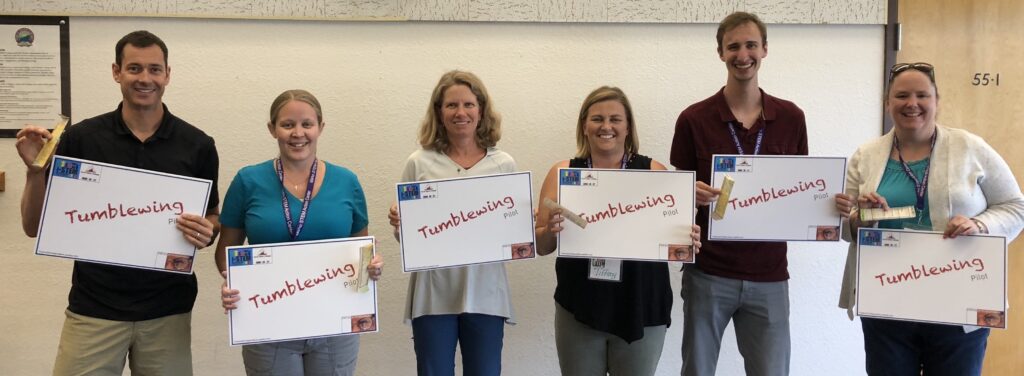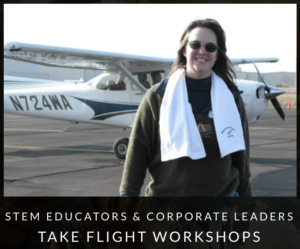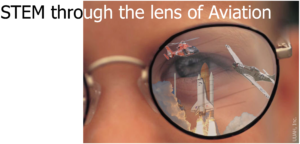S cience
T echnology
E ngineering
M ath*
The Problem: The United States needs to produce more STEM teachers and graduates in STEM majors, as well as generate greater interest in STEM among women, minorities, and underserved students.

An Underused Resource: Aviation is an engaging topic, and small airports are intrinsically STEM-rich environments.
A Solution: While many initiatives are attempting to arrest the nation’s freefalling STEM education system, aviation-themed outreach can provide a ready solution not only to the national STEM problem, but also to the projected workforce needs of the aviation and aerospace sectors.
A Research-based Philosophy: At least 15 years before aviation alphabet groups entered the STEM outreach/education space, Rich’s friend and colleague Linda Castner was developing and testing innovative, aviation-themed STEM programs for youth and adults alike. Rich’s initial involvement came as the lead flight facilitator for Women Take Flight workshops that targeted high school teachers and college professors. He has since collaborated with Linda and other stakeholders on numerous STEM grants, papers, and programs. This is what they’ve learned along the way:
- Know that parents and teachers generally are receptive to high-quality training on STEM topics.
- Plant the seeds of STEM early along with and in support of the seeds of literacy.
- Use early childhood experiences to build the foundation for a skilled workforce, responsible community, and thriving economy.
- Use interactive experiences to promote the concepts of deep practice and lifelong learning.
- Get teachers to experience the same hands-on, engaging learning environments and practices as their students.
- Approach outreach as a continuous process. “Random acts of STEM” are ineffective.
- Interact and form partnerships with stakeholders who have similar learning objectives. Operating in silos is ineffective.

Papers, Articles, & Videos
 2019: Castner, Stowell, and Olabisi, Results from an Aviation-Themed Pilot Project Designed to Improve Executive Function Skills and Increase Transportation Career Awareness, an imaginary play activity called Learn to Fly with Katie Doo delivered to Pre-K children.
2019: Castner, Stowell, and Olabisi, Results from an Aviation-Themed Pilot Project Designed to Improve Executive Function Skills and Increase Transportation Career Awareness, an imaginary play activity called Learn to Fly with Katie Doo delivered to Pre-K children.
2018: Renee Michalson, Taking Flight with Rich Stowell, article by PCS Edventures about one of Rich’s multi-day drone programs.
2017: Castner and Stowell, Effective Outreach: Preserving General Aviation by Putting the “Public” in Public-Use Airports.
2012: Castner, Scheer, Stafford, and Stowell, Creating Business-Education Partnerships: A Case Study Using an Airport as a Living Laboratory for STEM, paper presented at the DOT National Workforce Summit, Washington, DC.
2017: Grant-funded collaborative effort to deliver a day-long Navigation lab during an Aerospace Career Exploration (ACE) Academy. Five minutes, produced by Boise State University.
2013: Rutgers Women Take Flight Workshop, a research effort to test The Flying Effect™ program theory. Supported by a grant from the National Science Foundation. 2-1/2 minutes, produced by Rutgers University.
Simple promotional video for The Art and Science of Flying Ground School held in Boise, ID in 2016.
Created on an iPad using Adobe Voice, 01:41.
* STEM through the Lens of Aviation and The Flying Effect theory are trademarks of Linda Castner.

